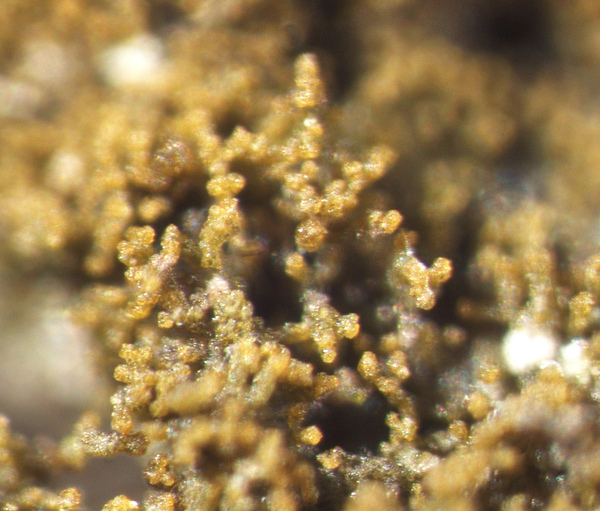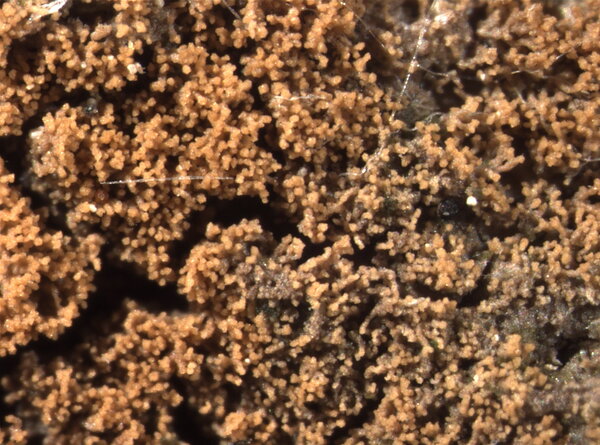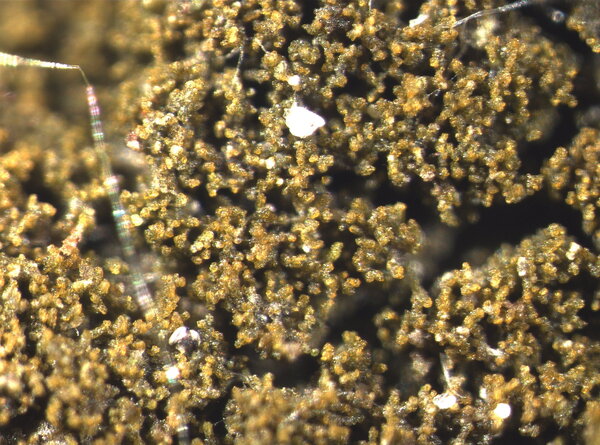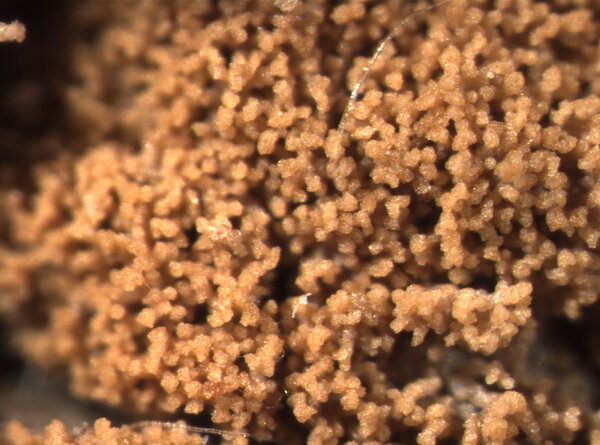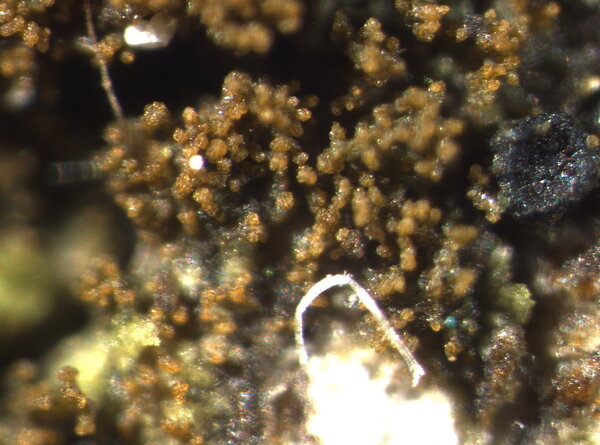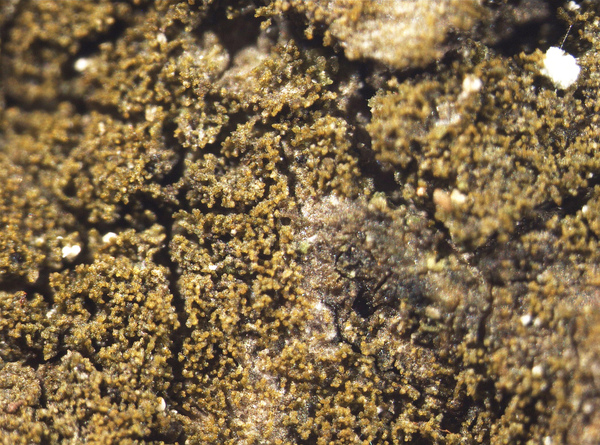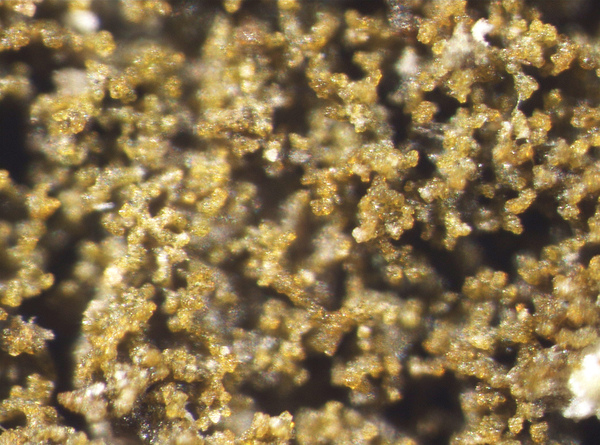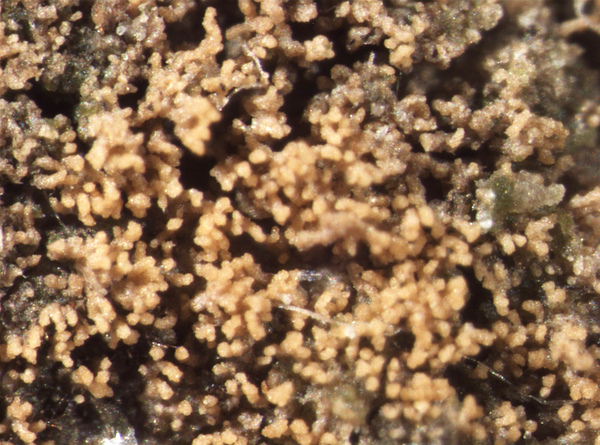Porina pseudohibernica Tretiach
Lichenologist, 46: 618, 2014.
Synonyms: Zamenhofia pseudohibernica (Tretiach) Cl. Roux & Tretiach
Distribution: N - Frl (Tretiach 2014).
Description: Thallus crustose, episubstratic, pale orange-brown with an olive-green tinge, fading to ochre or pale brown in the herbarium, isidiate. Isidia often crowded, branched and coralloid, fragile, to 0.7 mm tall, the branches 27-37(-45) μm thick, ecorticate or with a thin, inconspicuous cortex. Perithecia occasional, subglobose, black, matt, semi-immersed but not covered by a thalline layer, solitary, 0.34-0.43 mm across, the ostiole white in fertile perithecia due to a distinct, persistent crown of periphyses protruding slightly from the pore. Involucrellum contiguous with the exciple, extending to exciple-base level, dull brown to black, in section dull reddish brown to blackish, K+ greenish to blackish blue, N+ golden to reddish brown; exciple thin, colourless throughout; paraphyses simple, filiform, numerous, persistent, c. 1 μm thick; hymenium inspersed with oil droplets. Asci 8-spored, thin-walled, with a more or less truncate apex and without an apical chitinoid ring, I-, the cytoplasm I+ yellowish red. Ascospores 7-8(-9)-septate, hyaline, thin-walled, fusiform or caudate-fusiform, with acute ends, 34-53 x 7-10 μm; immature spores with a well-developed gelatinous perispore. Photobiont trentepohlioid. Spot tests: thallus K-, C-, KC-, P-, UV-. Chemistry: thallus without lichen substances.Note: a recently-described species found on shaded bark or epiphytic bryophytes in very humid forests, hitherto known from several localities in Southern Europe.
Growth form: Crustose
Substrata: bark
Photobiont: Trentepohlia
Reproductive strategy: mainly asexual, by isidia, or isidia-like structures (e.g. schizidia)
Most common in areas with a humid-warm climate (e.g. most of Tyrrenian Italy)
Commonnes-rarity: (info)
Alpine belt: absent
Subalpine belt: absent
Oromediterranean belt: absent
Montane belt: extremely rare
Submediterranean belt: absent
Padanian area: absent
Humid submediterranean belt: absent
Humid mediterranean belt: absent
Dry mediterranean belt: absent
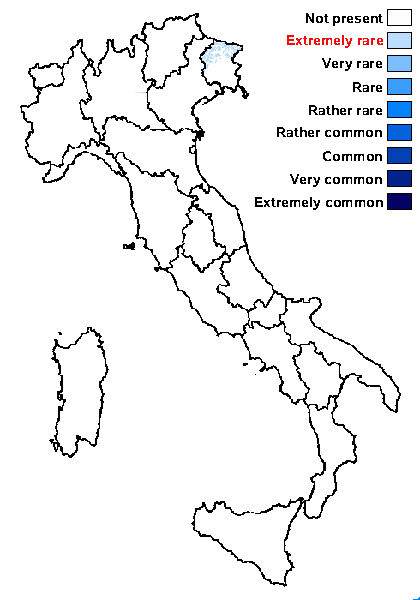
Predictive model
Herbarium samples
Growth form: Crustose
Substrata: bark
Photobiont: Trentepohlia
Reproductive strategy: mainly asexual, by isidia, or isidia-like structures (e.g. schizidia)
Most common in areas with a humid-warm climate (e.g. most of Tyrrenian Italy)
Commonnes-rarity: (info)
Alpine belt: absent
Subalpine belt: absent
Oromediterranean belt: absent
Montane belt: extremely rare
Submediterranean belt: absent
Padanian area: absent
Humid submediterranean belt: absent
Humid mediterranean belt: absent
Dry mediterranean belt: absent

Predictive model
| Herbarium samples |
 INDEX FUNGORUM
INDEX FUNGORUM
 GBIF
GBIF
 DOLICHENS
DOLICHENS
